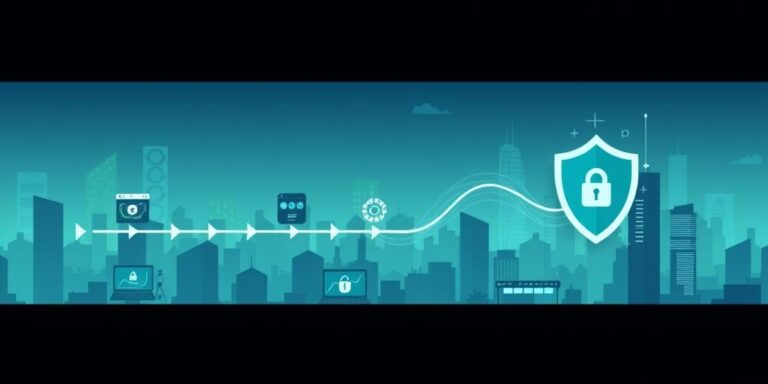Threat Modeling Throughout the Software Lifecycle (2026)
In the rapidly evolving landscape of software development, security is no longer an afterthought but an integral component of the entire software lifecycle. Threat modeling, a structured approach to identifying and addressing potential security vulnerabilities, plays a crucial role in ensuring the resilience and integrity of software applications. This article explores the importance of incorporating threat modeling throughout the software lifecycle in 2026, considering advancements in technology, emerging threats, and evolving regulatory requirements.
What is Threat Modeling?
Threat modeling is a proactive security assessment technique that involves identifying potential threats, vulnerabilities, and attack vectors within a software system. It provides a structured approach to understanding how an attacker might compromise a system and helps prioritize security efforts based on risk. By identifying potential weaknesses early in the development process, threat modeling enables developers to design more secure systems and mitigate risks before they can be exploited.
Why is Threat Modeling Important in 2026?
In 2026, the importance of threat modeling is amplified by several factors:
- Increased Complexity: Software systems are becoming increasingly complex, with distributed architectures, microservices, and cloud-native deployments. This complexity introduces new attack surfaces and potential vulnerabilities that must be addressed through comprehensive threat modeling.
- Evolving Threat Landscape: The threat landscape is constantly evolving, with new attack techniques and vulnerabilities emerging regularly. Threat modeling helps organizations stay ahead of these threats by identifying potential weaknesses and implementing proactive security measures.
- Regulatory Compliance: Regulatory requirements for data privacy and security are becoming more stringent, with regulations like GDPR, CCPA, and others mandating organizations to implement appropriate security measures to protect sensitive data. Threat modeling helps organizations comply with these regulations by identifying and addressing potential security risks.
- Cost Savings: Identifying and addressing security vulnerabilities early in the development process is significantly cheaper than remediating them after deployment. Threat modeling helps organizations save time and money by preventing costly security incidents and data breaches.
Integrating Threat Modeling into the Software Lifecycle
To maximize the benefits of threat modeling, it should be integrated into every stage of the software lifecycle:
- Requirements Gathering: During the requirements gathering phase, threat modeling helps identify potential security and privacy requirements. By considering security from the outset, developers can design systems that are secure by default.
- Design: Threat modeling should be conducted during the design phase to identify potential vulnerabilities in the system architecture and design. This helps developers make informed decisions about security controls and mitigations.
- Development: As code is written, threat modeling helps identify potential vulnerabilities in the code itself. Static and dynamic analysis tools can be used to identify common coding errors and security flaws.
- Testing: Threat modeling should be used to guide security testing efforts, ensuring that all potential attack vectors are thoroughly tested. Penetration testing, vulnerability scanning, and other security testing techniques can be used to validate the effectiveness of security controls.
- Deployment: Before deploying a system, threat modeling should be conducted to identify potential vulnerabilities in the deployment environment. This includes assessing the security of the underlying infrastructure, network configurations, and access controls.
- Maintenance: Threat modeling should be an ongoing process, with regular assessments conducted to identify new threats and vulnerabilities. This helps organizations stay ahead of the evolving threat landscape and maintain a strong security posture.
Best Practices for Threat Modeling in 2026
To ensure the effectiveness of threat modeling efforts, organizations should follow these best practices:
- Use a Structured Approach: Employ a structured threat modeling methodology, such as STRIDE, PASTA, or OCTAVE, to ensure a comprehensive and consistent assessment process.
- Involve Stakeholders: Involve stakeholders from different areas of the organization, including developers, security professionals, business analysts, and operations teams, to gain a holistic view of potential threats and vulnerabilities.
- Automate Where Possible: Leverage automation tools to streamline the threat modeling process, such as threat modeling platforms, static analysis tools, and vulnerability scanners.
- Prioritize Risks: Prioritize identified risks based on their potential impact and likelihood, focusing on the most critical threats first.
- Document Findings: Document all threat modeling findings, including identified threats, vulnerabilities, and mitigations, to provide a clear record of the assessment process.
- Regularly Update Models: Regularly update threat models to reflect changes in the system, threat landscape, and regulatory requirements.
Conclusion
In 2026, threat modeling is an essential practice for ensuring the security and resilience of software systems. By integrating threat modeling throughout the software lifecycle and following best practices, organizations can proactively identify and address potential security vulnerabilities, reduce the risk of costly security incidents, and comply with evolving regulatory requirements. As software systems become increasingly complex and the threat landscape continues to evolve, threat modeling will play an even more critical role in protecting sensitive data and ensuring the integrity of critical infrastructure.




